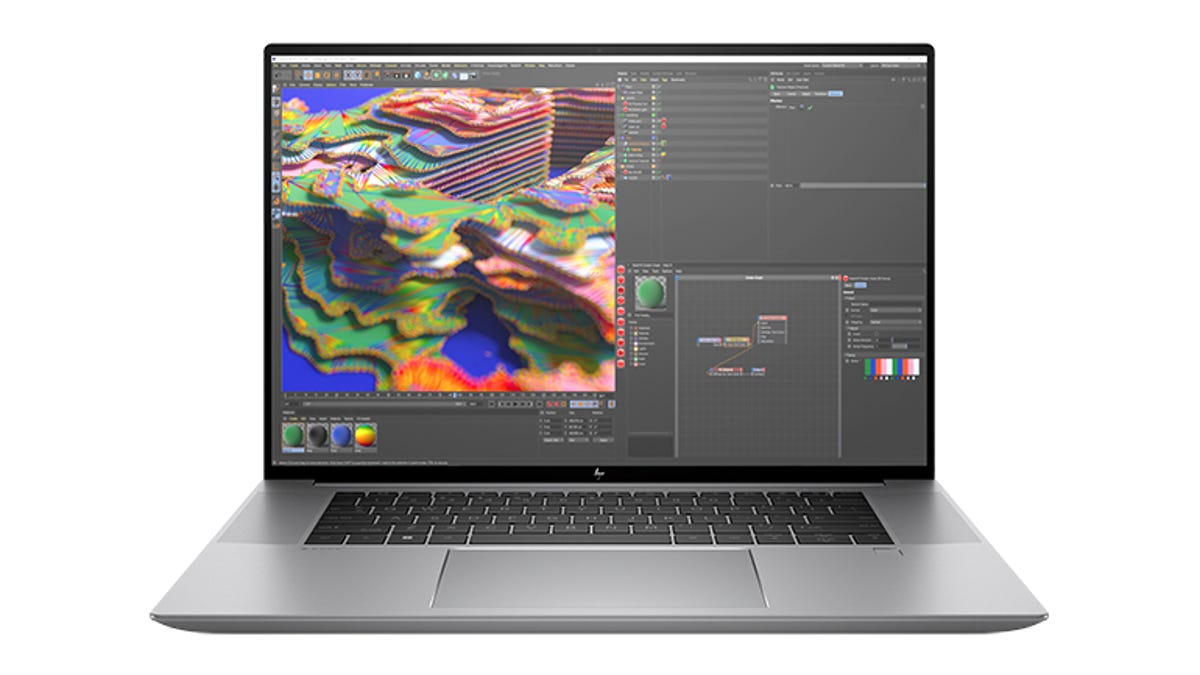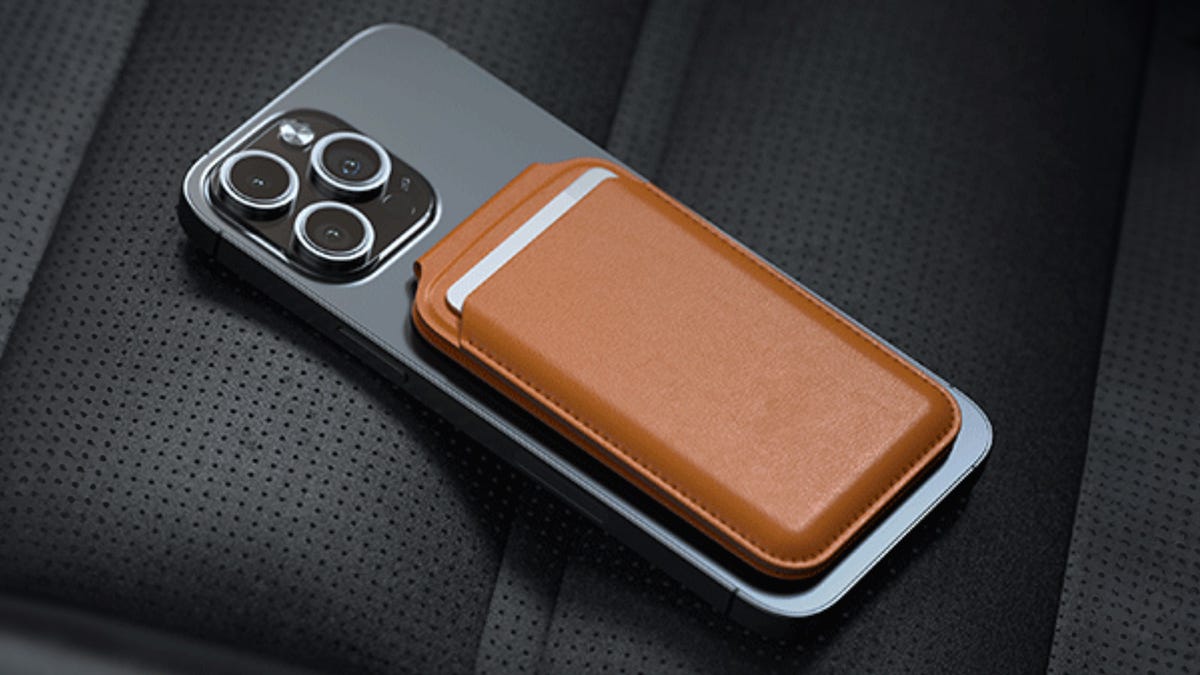HP ZBook Studio G9 review: A premium mobile workstation with multiple graphics options
Pros
- 16-inch 16:10 screen, up to 4K OLED
- Multiple configuration options
- Good selection of ports
- Good speakers
HP’s ZBook Studio G9 is not a laptop for the generalist user. With a US starting price of around $2,500, it includes up to a 12th generation Intel Core i9 H series processor, a 4K 16-inch screen, up to 4TB of SSD storage and high-end discrete Nvidia graphics. With all this packed into a reasonably portable form factor and good battery life, is the ZBook Studio G9 the ideal companion for creative users?
Outwardly the HP ZBook Studio G9 looks pretty standard, although the large ‘Z’ branding on the lid is now somewhat unfortunate. It’s a bulky and relatively weighty laptop measuring 35.6cm wide by 24.2cm deep by 1.9cm thick and weighing at least 1.73kg. Users should expect plenty of protection for the expensive innards of a laptop like this, so it’s no surprise to see MIL STD 810H certification.
The 16-inch screen sits in small bezels all round. The screen has a 16:10 aspect ratio, and our calculation puts the screen-to-body ratio at 86%. There are several choices, with my review sample having the entry-level WUXGA (1,920 x 1,200) non-touch IPS option. There are two variants at this resolution, one maxing out at 400 nits, the other rising to 1000 nits and incorporating HP’s Sure View Reflect privacy screen. My review unit was the former so I could not test the privacy screen.
The 4K WQUXGA (3840 x 2400) options will suit creative users better. On offer here is a 120Hz IPS HP DreamColor screen with 500 nits brightness and 100% DCI-P3 colour gamut coverage, or an OLED touch screen with 400 nits brightness, Gorilla Glass 5 protection and 100% DCI-P3 coverage.
Whatever your choice of screen, the webcam is a 720p unit. That’s disappointing in a high-end laptop, and although there’s IR support, enabling Windows Hello face authentication, we’d prefer 1080p resolution as well.
A good audio subsystem is an increasingly important requirement for laptops of all types, and the ZBook Studio G9 doesn’t disappoint. There are wide grilles either side of the keyboard through which the Bang & Olufsen speakers – a quad array comprising two tweeters and two woofers – deliver audio output. There are further narrow grilles on the underside for the woofers. Audio quality is reasonably rich with no distortion at top volume, which is quite loud. There is enough bass for rock music to be enjoyable, and a good blend of tones for classical and chamber music. Spoken word output was sharp and clear, too.
Our review unit had HP’s Premium Quiet Keyboard, which is spill-resistant, full-size, and backlit. Image: Sandra Vogel / ZDNET
The keyboard comprises large QWERTY keys and a row of sizeable function keys. The key action is light, with little resistance on the downstroke and plenty of bounce-back. Typing creates a lot of ‘click-clack’ sound which may be distracting to others in the vicinity. While it delivers a comfortable enough typing experience, this is not the most rewarding keyboard I have used. That said, keyboard preferences vary, so this is merely a personal opinion.
The clickpad is vast, with a glass surface that’s smooth to the touch and responsive to gestures. There is a fingerprint sensor in the wrist rest, below the keyboard on the right side. Many laptop makers integrate the fingerprint sensor into an on-keyboard power button, so it’s odd to see a discrete sensor here — particularly as the power button is part of the Fn row. That said, HP’s arrangement is perfectly serviceable.
There are plenty of configuration options available in the US. Processors include Intel Core i7-12700H, Core i7-12800H, Core i9-12900H and Core i9-12900HK. RAM is available at 16GB, 32GB and 64GB, and SSD storage at 256GB, 512GB, 1TB, 2TB and 4TB. And as you’d expect with a mobile workstation, there’s a (very) good choice of discrete GPUs, all from Nvidia: RTX A1000 (4GB), RTX A2000 (8GB), RTX A3000 (12GB), RTX A4500 (16GB), RTX 5500 (16GB), GeForce RTX 3060 (6GB), GeForce RTX 3070 Ti (8GB), GeForce RTX 3080 Ti (16GB).
My review unit had a Core i7-12700H processor, 16GB of RAM, 512GB of SSD storage and an Nvidia RTX A1000 GPU with 4GB of dedicated video memory. It turned in Geekbench 5 CPU benchmarks of 1715 (single core) and 10746 (multi core), while the Geekbench 5 Compute GPU benchmark was 48784. By way of comparison, a high-end Core i9-13900K processor scores around 3000 (single core) and around 23000 (multi core), while a high-end Nvidia GeForce RTX 3090 Ti GPU tops the Geekbench 5 OpenCL benchmark chart with 229738 at the time of writing.
Left side (top): power in, 2x Thunderbolt 4, 3.5mm audio in/out. Right side (above): Micro SD card reader, USB-C, USB-A, lock slot. Images: Sandra Vogel / ZDNET
There is a good array of ports and connectors, including a MicroSD card slot, USB-C port and USB-A ports, a pair of Thunderbolt 4 ports, a 3.5mm headset jack and a pound-pin power connector. The presence of the latter means that three USB-C ports are always accessible, two of these being Thunderbolt 4. If you need HDMI or wired Ethernet, you’ll need an external docking station or hub.
The HP ZBook Studio G9 has an 86Wh battery. This lost 30% from a full charge during a three-hour work session during which I wrote into web apps, browsed and streamed various media. This suggests total battery life of around 10 hours with moderate workloads for our Core i7/Nvidia RTX A1000 review unit. I let the battery drain down to 21% and then started to charge it; after a 45-minute bout of mains power the battery had risen to 74%.
On the basis of this real-world experience, I would expect a full day’s work to be possible on battery power. However, emergency charging might require some patience.
Conclusions
HP’s ZBook Studio G9 is a well built and configurable 16-inch mobile workstation, although venturing into the upper range of the many available options can get expensive.
The audio subsystem and range of ports impress, but the 720p webcam is disappointing. Battery life is good for a powerful laptop, although our review unit was by no means a high-end configuration.
HP ZBook Studio G9 specifications
| OS | Windows 11 (Home, Pro), Windows 10 Pro, Ubuntu 20.04, FreeDOS 3.0 |
| Processor | Intel Core i7-12800H, Core i9-12900H |
| Graphics | integrated: Intel Iris Xᵉ Graphics • discrete: Nvidia RTX A1000 (4GB GDDR6); GeForce RTX 3060 Laptop GPU (6GB); GeForce RTX 3070 Ti Laptop GPU (8GB); GeForce RTX 3080 Ti Laptop GPU (16GB); RTX A4500 Laptop GPU (16GB); RTX A5500 Laptop GPU (12GB) |
| RAM | up to 64GB DDR5-4800 |
| – Memory slots | 2x SODIMM |
| Storage | 256GB-4TB PCIe Gen4 x4 NVMe M.2 SSD • up to 512GB PCIe NVMe M.2 SED SSD |
| Display | 16″ WUXGA (1920 x 1200), IPS, anti-glare, 1000 nits, 72% NTSC, HP Sure View Reflect integrated privacy screen • 16″ WUXGA (1920 x 1200), IPS, narrow bezel, anti-glare, Low Blue Light, 400 nits, low power, 100% sRGB • 16″ 4K WQUXGA (3840 x 2400), 120Hz, IPS, anti-glare, 500 nits, 100% DCI-P3, HP DreamColor • 16″ 4K WQUXGA (3840 x 2400), OLED, multitouch-enabled, UWVA, BrightView, Corning Gorilla Glass 5, Low Blue Light, 400 nits, 100% DCI-P3 |
| Ports | left side: power connector, 3.5mm headphone/microphone combo, 2x Thunderbolt 4 / USB 4 (40Gbps, USB Power Delivery, DisplayPort 1.4, HP Sleep and Charge) • right side: USB-A (5Gbps, charging), USB-C (10Gbps, USB Power Delivery, DisplayPort 1.4) |
| Slots | MicroSD card reader |
| Wi-Fi | Wi-Fi 6E (2.4GHz, 5GHz, 6GHz 802.11ax) |
| Bluetooth | 5.2 |
| Input | HP Premium Quiet Keyboard (spill-resistant, full-size, backlit keyboard with drain and DuraKeys) • HP RGB Keyboard (full-size, per-key RGB backlit keyboard) • HP RGB Z Command Keyboard (spill-resistant, full-size, backlit keyboard with drain and DuraKeys) • Clickpad with image sensor, supporting multi-touch gestures and taps |
| Audio | Audio by Bang & Olufsen, quad-speaker audio (2x tweeters, 2x woofers), dual array digital microphones, Function keys for volume up/down, combo microphone/headphone jack |
| Camera | 720p IR webcam |
| Software | Bing search for IE11, Buy Office, HP Hotkey Support, HP Noise Cancellation Software, HP Performance Advisor, HP Support Assistant, Native Miracast support, HP Connection Optimizer, HP Privacy Settings, HP QuickDrop, Data Science Stack, HP Easy Clean, HP PC Hardware Diagnostics, HP ZCentral Remote Boost 2020 Software for Z workstation, Tile Application, Windows 10 Cloud Recovery Client, 1-month Adobe free trial offer, HP Z Light Space, HP Camera & Super Resolution Software |
| Security | Absolute persistence module, HP Device Access Manager, HP Power On Authentication, Trusted Platform Module TPM 2.0 Embedded Security Chip, Master Boot Record security, Pre-boot authentication, Windows Defender, HP Manageability Integration Kit, HP BIOSphere Gen6, HP Sure Start Gen6, HP Sure Admin, HP Image Assistant, HP Tamper Lock, MS Bitlocker Encryption, Nano Security Lock Slot, HP Client Security Manager Gen7, HP Privacy Key |
| Fingerprint reader | yes |
| Management features | HP Power Manager |
| Battery capacity | 86Wh |
| AC adapter | HP Slim Smart 150W • HP Slim Smart 200W |
| Battery charge time | ~50% in 30 minutes |
| Dimensions | non-touch: 35.6cm x 24.2cm x 1.9cm (14.02in. x 9.54in. x 0.76in.) • touch: 35.6cm x 24.2cm x 1.8cm (14.02in. x 9.54in. x 0.72in.) |
| Weight | from 1.73kg (3.81lbs) |
| Price | from $2,853.20 |
Alternatives to consider
Read review: Dell Precision 5760 Mobile Workstation
Read review: Asus Zenbook Pro 16X OLED
RECENT AND RELATED CONTENT
HP’s new ZBook Fury is a laptop that promises desktop performance
Lenovo ThinkPad P17 Gen 2 review: A highly configurable old-school mobile workstation
Dell Precision 5470 Workstation review: Portable workstation power
Microsoft Surface Laptop Studio review: A true convertible, with designer appeal
The best laptops for graphic design: Top creator notebooks
Read more reviews





Pingback: 다시보기
Pingback: briansclub
Pingback: NKSFB David Bolno
Pingback: clase azul tequila pink edition